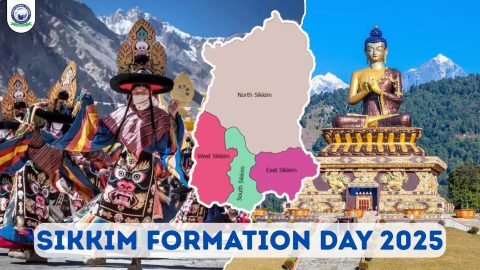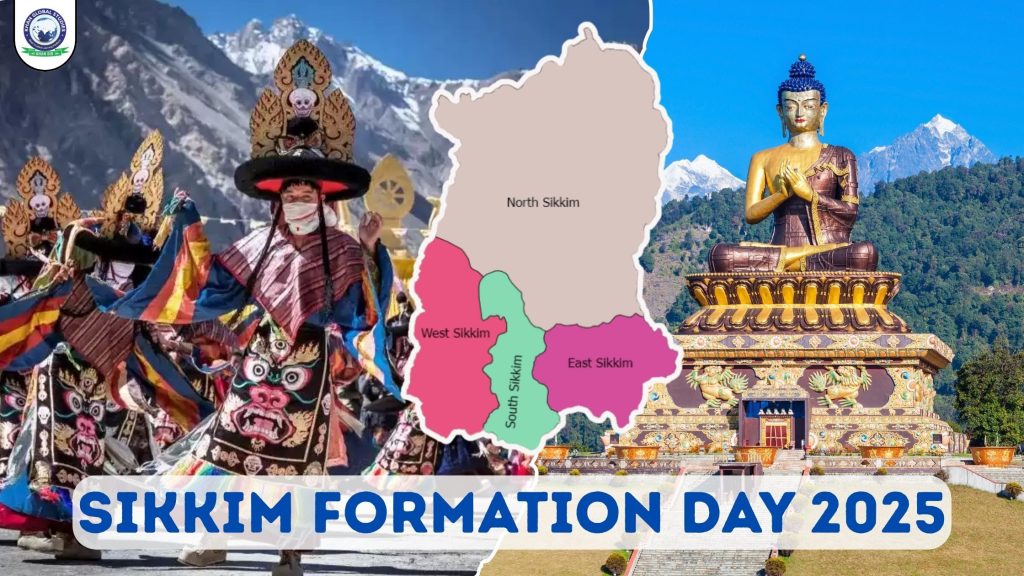Every year on 16th May, Sikkim Foundation Day is celebrated. This day commemorates the historic event when Sikkim became the 22nd state of India. It not only marks a political transformation but is also a celebration of Sikkim’s culture, heritage, and unity.
History of Sikkim Foundation Day
After India’s independence, Sikkim remained a sovereign monarchy. In 1947, following India’s independence, Sikkim signed a special treaty with India, making it a protected state under Indian influence. This status continued till 1975.
Merger of Sikkim with India:
- In 1973, a democratic movement began in Sikkim demanding reforms.
- The Government of India intervened and conducted a referendum.
- The majority of people voted in favor of joining India.
- Finally, on 16th May 1975, Sikkim officially became a full-fledged state of the Indian Union.
To commemorate this historic day, Sikkim Foundation Day is celebrated every year on 16th May.
Key Features of Sikkim
- Geographical Location:
- Sikkim is a small but extremely beautiful hilly state located in the northeastern part of India. It shares its borders with China (North), Bhutan (East), Nepal (West), and West Bengal (South).
- Capital: Gangtok
- Area: Approximately 7,096 sq. km
- Population: Around 6.1 lakh (2021 estimate)
- Languages: Nepali, Lepcha, Bhutia, Hindi, and English
- Religious Diversity: Mainly Hinduism and Buddhism
Culture and Heritage of Sikkim
Sikkim is a state rich in diversity and vibrant cultural traditions. The cultural presence of Nepali, Lepcha, and Bhutia communities is clearly visible. Buddhist monasteries, colorful festivals, traditional dances, and attires are the pride of Sikkim.
- Major Festivals:
- Losar: Tibetan New Year
- Saga Dawa: Buddha Purnima
- Dashain and Tihar: Nepali festivals
Sikkim’s Contributions to Development
Sikkim has become a role model for environmental conservation and sustainable development in India.
- Major Achievements: India’s First Fully Organic State: Sikkim has completely banned chemical fertilizers and pesticides.
- Leader in Cleanliness and Environmental Protection: Plastic is banned, and natural resources are actively protected.
- Tourism Hub: Sites like Mount Kanchenjunga, Nathula Pass, and Gurudongmar Lake have made Sikkim a tourist paradise.
Significance and Celebrations of Foundation Day
- Sikkim Foundation Day is celebrated with great enthusiasm and pride across the state. On this day:
- Official ceremonies are organized.
- Cultural programs, traditional dances, songs, and parades are held.
- The state government honors distinguished citizens and public servants.
This day reminds citizens of Sikkim’s glorious history and inspires them to contribute to its future development.
FAQs
Q1: When is Sikkim Foundation Day celebrated?
Ans: Every year on 16th May.
Q2: When did Sikkim become a part of India?
Ans: On 16th May 1975, Sikkim became the 22nd state of India.
Q3: What are the official languages of Sikkim?
Ans: Nepali, English, Lepcha, Bhutia, and Hindi.
Q4: What kind of state is Sikkim?
Ans: It is a full-fledged Indian state known for organic farming and environmental protection.
Conclusion
Sikkim Foundation Day is not just a historical day; it is a celebration of unity, development, and cultural diversity. It reminds us how democracy, public will, and national unity can mark the beginning of a new era.
This 16th May, let us all honor the pride of Sikkim and contribute to its journey of sustainable growth and harmony.
Also Read:
- Maharashtra Foundation Day 2025: History & Background
- Gujarat Foundation Day 2025: History and Background



